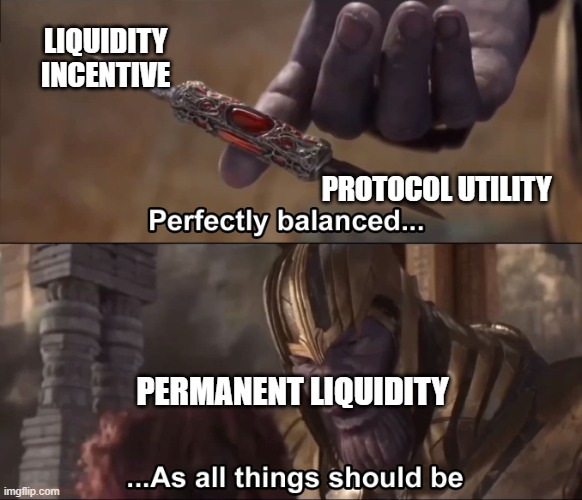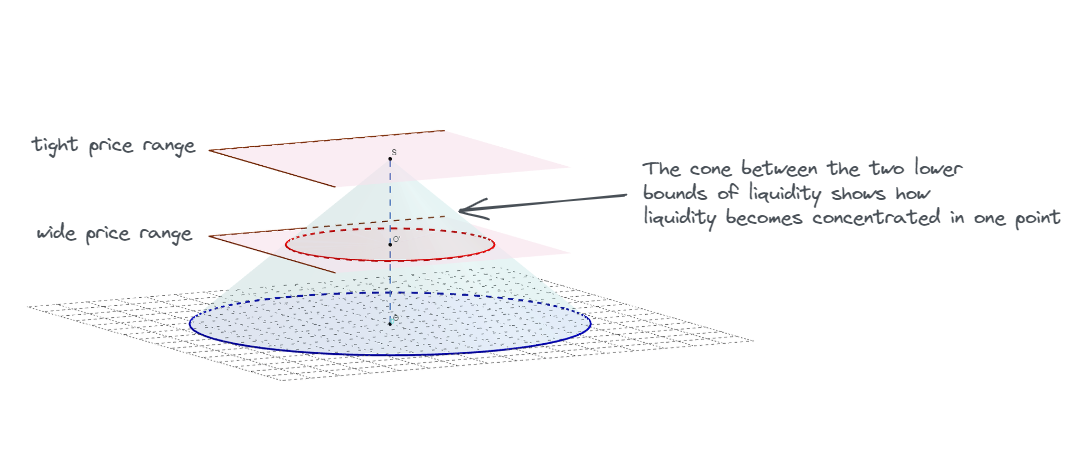Article by @turbotutur
Disclaimer : The information provided in
this article does not constitute investment advice, financial advice, or
any other sort of advice and you should not treat any of the website's
content as such. Do your own research and remember this information is
provided for educational purposes only.
A deep dive on Curve wars (note that this article is not fit for someone that doesn’t have basic knowledge about CRV/CVX)

The Curve War is raging. In the middle of this tumultuous storm between protocols, they all fight for one thing : liquidity. You probably heard the word “liquidity” before, but, in context, what is its exact meaning? What is all the fuss about Liquidity?
The article will be divided into 3 parts,
- I- Liquidity
- II- Curve Wars and its participants
- III- Conclusion
I- Liquidity
Liquidity is often misidentified, misunderstood. Through visual examples, I’ll try to convey my views about liquidity and why it is such an important matter.
DeFi and liquidity, the former does not work without the latter. Unlike centralized finance, which uses its advantages to have liquidity available at all times, DeFi have a major problem. Liquidity in DeFi is characterized by human emotions and convictions.
Liquidity is literally you. The challenge for any DeFi protocol today is to capture liquidity and retain it for the proper functioning of the protocol itself. This is a huge double-sided challenge:
- external: acknowledge & tackle competitor’s protocols
- internal: constantly innovate
Liquidity and Protocol, alliance is a must, but with whom?
Over the past year, we have seen many systems that have come up with solutions (viable or not) about liquidity incentives. From liquidity mining to renting liquidity, then protocol owned liquidity. All of these propositions have their own pros and cons to attract & retain liquidity (For this article I will not go into detail about these concepts and how they work, it is up to you to do your research).
“Perfectly balanced, like everything should be”. Thanos might be right, liquidity should be balanced between incentive and protocol utility. Creating stickiness and durability.

Liquidity as its name suggests is liquid, and should be seen as a liquid. A liquid does not have a shape, it is up to the protocol to give it one. In the same way that liquidity has a different viscosity on which the protocol can act in order to optimize its use.

An example of this pattern is the concentrated liquidity of Uniswap v3 :

I understand this diagram as follows : Uniswap v3 through its concentrated liquidity system forms liquidity in a conical manner. At the “wide price range” liquidity is dispersed and thin, so it is more inefficient and will be considered less efficient. On the contrary, in the “tight price range” liquidity is thinly spread, thicker and therefore more liquid. It allows maintaining a defined price and facilitates trading by optimizing liquidity over a price range. High viscosity on the lower bound, lower viscosity on the higher bound…
That being said, how does this relate to Curve ? You get what Curve Wars was all about? Why everyone is now fighting to get a piece of the pie ? The key here is liquidity. The Curve system allows these incentives to be “directed” to certain pools, hence the desire of the protocols to control these incentives in order to increase their liquidity and facilitate trading. In a way, the CRV inflation directs liquidity (sounds like Tokemak, you should probably have a look at what $toke is, just sayin').
To conclude this section, it is important to remember that liquidity is a raw resource that needs to be shaped in a certain way so that it fits the form we want from it. Liquidity is like a drug for protocols. My recommendation here is to aim at protocols that allow the control of liquidity, one way or another.
II- Curve Wars and its participants
Now that we’ve covered that it is liquidity through CRV that protocols seek to obtain, let’s see how they manage to control CRV inflation to their advantage.
First mover advantage. Curve wars have been raging for a few weeks, but some protocols discovered its potential months ago. Convex is one of those projects that quickly understood the importance of getting CRV. Are you ready for governance war anon? I’m only mentioning this now because it seemed so obvious, but it’s worth remembering that Curve is a DAO, so the veCRV (vote escrowed CRV) holders can choose to direct CRV inflation to the pool they want (I’m deliberately not mentioning Yearn in this article because I consider Convex to be the largest voting power holder since Yearn joined Convex)
Convex is now sitting on a $18.08B TVL(Curve TVL is about $22.6B). How did Convex achieve such a masterstroke ? By creating incentives on their pool that were higher than Curve’s. In exchange, Convex serves as a black hole for veCRV allowing them to increase their decision power on CRV inflation and thus boost their own pools once again, creating a positive flywheel. Doing so, Convex was able to obtain a large part of the circulating veCRVs. As of today, they hold 51% of the circulating veCRVs. Convex has therefore a (way too) large influence on the CRV inflation gauge.
The bribening. Soon enough, the concept of bribing was introduced in this never ending war for liquidity. If liquidity can’t be bought, it can be rented. This is what MIM, UST or Frax and many others are doing, in order to continue to have the upper hand in the CRV distribution.
According to https://llama.airforce/#/votium/overview, $1 spent is worth $4.62 in revenue to the protocols that pay out. This system is very lucrative, and with the recent changes -

- It should continue to grow overtime for those who delegate their vlCVX* to these protocols. (*Vote Locked CVX)
Convex, a monopoly? Simply put, yes. Right now Convex has a lot of influence on Curve inflation and get even bribed to get a share of CRV inflation from third party protocols. Many DAOs are also looking to get a piece of the pie, either by accumulating CRV or CVX… To name a few: TIME, SPELL, Alchemix, Redacted, OHM, StakeDAO, Frax…
Everyone tries in their own way to benefit from Curve inflation by buying CRV, CVX and even BTRFLY, but what is the best decision?
There is a fairly simple calculation that allows you to quickly gauge which is the most cost-efficient to acquire, mainly CRV and CVX.
Current voting power per 1$:
- CRV: 1/$5.4= 0.1851
- CVX: (5.31 CRV locked per CVX) → 5.31/$41.43= 0.1281
- BTRFLY: (184.4 CRV per BTRFLY) → 184.4/$2375 = 0.077
Today, one of the most interesting strategies would be to accumulate CRV and bribe the CVX holders. A protocol can ensure a growing voting power in the weights gauges, in addition to taking advantage of the governance power held by the CVX holders. In the long run this can even be a self-sustaining flywheel where a substantial bag of veCRV is enough to provide the necessary funding for bribes…
III- Conclusion
Thoughts & opinion. So what’s the smart move here? In my opinion, although we’ve already had quite a rally, CRV and CVX remain interesting plays and I consider them a relatively “safe-bet”. Everything that will follow around CRV/CVX will also be interesting: Curvance (not launched yet), BTRFLY, Bent…
Governance Wars SZN? As ponzinomics develops, governance becomes a major part of the protocols and no longer represents only a monetary aspect (price appreciation, yield farming…) but a real aspect of raw power. This is much more interesting than monetary incentives because it allows a greater and more sustainable ROI (depending on the protocol's tokenomics.)
Disclaimer. None of this is meant to be financial advice. Once again, I beg you to do your own research and only invest money you can afford to lose.
